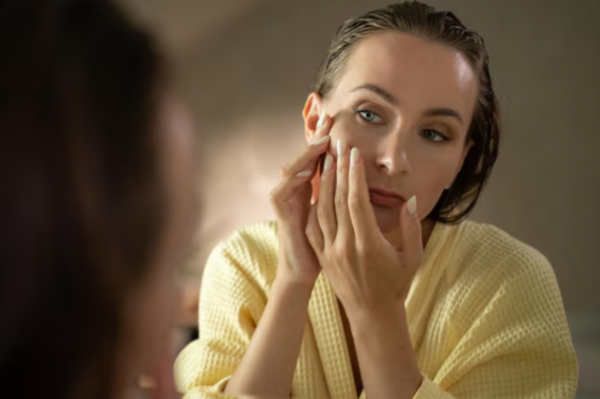
What is Fungal Acne? Causes, Symptoms and Treatments
Fungal acne looks similar to acne but is much more sore than acne. The awareness about this condition has to be increased to understand its causes, symptoms, and treatment. Let us learn how to treat fungal acne to get clear, radiant, youthful skin.
What is Fungal Acne?
Malassezia folliculitis is the scientific name for fungal acne. It is usually a condition where the Malassezia species of yeast overgrows. This yeast is a normal part of the skin, but it can multiply excessively, leading to inflammation and breakout, which are sore. Meanwhile, traditional acne is caused by clogged pores and excess oil production.
What Is The Difference Between Fungal Acne and Regular Acne?
Although fungal and regular acne may appear similar with their small, red, itchy bumps, they have distinct causes and symptoms. Understanding these differences is critical to making informed decisions about your skincare.
Causes:
Regular acne is primarily caused by excess sebum production, clogged pores, and bacteria. In contrast, fungal acne is triggered by an imbalance in the skin’s natural flora, often exacerbated by humidity, sweat, and certain medications. Understanding these causes can help you better manage your skin health.
Appearance:
Fungal acne often looks like uniform, itchy pustules that may resemble acne but often lack the blackheads or whiteheads seen in traditional acne.
Treatment:
Fungal acne involves antifungal medications, while regular acne is usually treated with topical retinoids, benzoyl peroxide, or antibiotics.
Fungal Acne Causes
Fungal acne is caused due to many reasons. Some of them are mentioned below:
Humidity and Sweat:
Warm, humid environments promote yeast growth, making individuals who sweat excessively more susceptible.
Antibiotics:
They affect the bacterial balance and yeast on the skin, leading to excess growth.
Oily Skin Products:
Heavy creams and oils can create an environment conducive to fungal growth.
Fungal Acne Symptoms
Fungal acne has various visible symptoms, like :
Itchy Red Bumps:
These small, red, itchy pustules often appear on the chest, back, shoulders, and sometimes the face.
Uniformity of acne:
The bumps tend to be similar in size and shape, unlike the variety of sizes seen in bacterial acne.
Pustules:
While they can resemble acne, they often do not contain the typical comedones.

How is Fungal Acne Treated?
Fungal acne can be treated, and you can enjoy your youthful and fresh skin again by controlling the overgrowth of yeast. Fungal acne needs professional consultation and specific treatments, including oral and topical medications. Dermatologists can recommend specific skincare products tailored to individual needs, focusing on non-comedogenic and antifungal options. Proper consultation can help you work on your fungal acne, but you may need clarification about who to consult. Don’t worry; book an appointment with us and get proper advice.
Takeaway
Fungal acne is a distinct skin condition that requires careful attention and treatment. By understanding its unique characteristics, causes, and effective fungal acne treatment options, you can take control of your skincare routine. If you suspect you have fungal acne, consulting a dermatologist for a proper diagnosis and tailored treatment plan is essential.

FAQs Around Fungal Acne
1. Who gets fungal acne?
Individuals who sweat excessively, and those with fragile immune systems, are often prone to get fungal acne and even those who live in humid climates, but it’s not restricted to that, anyone can get them.
2. How to prevent fungal acne?
To prevent fungal acne, personal hygiene should be taken care of by following certain preventive measures that include:
- Maintaining Skin Hygiene: Regularly cleansing your skin, especially after sweating.
- Choosing the Right Products: Opt for non-comedogenic and oil-free skincare products.
- Wearing Breathable Fabrics: Choose loose-fitting clothes made from breathable materials to reduce sweat accumulation.
3. What to avoid with fungal acne?
Avoid using heavy creams with high oil content to minimize the risk of fungal acne. The tight clothing must be avoided to ensure the moisture and heat aren’t trapped.
